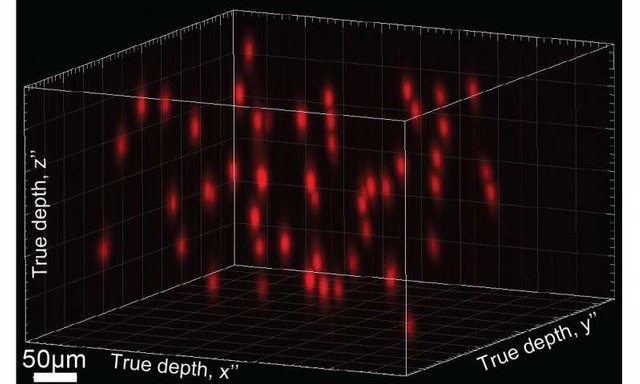Using Optogenetics and Holographic Projection, Scientists Aim to Implant Perceptions in Brain !
Berkeley neuroscientists at the University of California are trying to build the equipment to fool the brain. Their main aim is to be able to administer the brain sensations, memories, and moods. They have incorporated the holographic projections in the brain to trigger or quash down thousands of neurons simultaneously. They are trying hard to imitate the natural pattern of brains. This discovery has a lot of implications on neural prostheses, virtual brain implants with advanced senses, coping up with the neurological damages. Alan Mardinly, a postdoctoral fellow in the UC Berkeley lab of Hillel Adesnik, an assistant professor of molecular and cell biology said that if one can get major control on reading and writing the brain language then you can speak to it In its own language and it can better respond.

Figure: Sample hologram with 50 randomly distributed neuron targets spanning a region 500 microns square and 250 microns deep. Credit: Adesnik lab, UC Berkeley
Holographic ProjectionNeurons in the brain are supplied by proteins, which catalyzes an activity when hit by light. In order to focus light on just one cell body, the scientist has used the computer generatedholography. And a 3D image is formed at the thin tissue at the surface of the cortex. An exemplary model sensitive to touch, vision and motor have already been verified in the brains of the mice.Prosthetics and brain implantsThe outer part of the brain named cortex is now trained to read from or write to more neurons. The holographic brain modulator is invented by Mardinly, Pégard and Ian Oldenburg. They have done a fabulous job by way advancing the technology of optogenetic switches. These switches which are inserted into the cell can be now turned on and off. These switches are efficient enough to be stimulated up to fifty times per second which is quite similar to working of the cortex.Pégard has used a liquid crystal screen to shape up the light into desired 3D patterns. He, Mardinly, Oldenburg and their colleagues have called their device 3D-Shot and published a paper the previous year to explain it in detail. With advancement in this technology, the researchers have decided to start figuring out the activities in the cortex. This will help them in understanding how the cortex sense and think. And eventually help them recreating these sensations and ideas to showcase through their invented holographic system.
Reference: https://medicalxpress.com/news/2018-04-optogenetics-holographic-scientists-aim-implant.html